Heading out the door? Read this article on the new Outside+ app available now on iOS devices for members! Download the app.
There’s never been a better time to explore the nature right outside your doorstep. Birdwatching is a relaxing and educational way to enjoy wildlife, and can be done on the trails or from your kitchen window. Follow these tips from the National Audubon Society to attract, spot, and identify birds in your own backyard.
Make Your Yard Welcoming
Draw birds to you by providing food, shelter, and other amenities.
- Build a DIY birdfeeder: Store-bought feeders work great, but making your own out of materials found around the house is a great way to pass the time at home, especially with young kids. Cut a large hole in the side of a clean, empty milk carton (or whatever container you have lying around), attach a stick for birds to perch on, and fill the bottom with birdseed up to the edge of the hole. Hang your feeder where you can watch visitors come and go.
- Make a bird bath: Place a shallow pan of water (no more than 2 inches deep) in your yard. Add a few stones to entice your new feathered friends, and enjoy the show.
- Start a brush pile: Put all of those fallen sticks in your yard to good use. Birds love to take shelter amid stacks of logs and branches.
Spot these Common Birds
The following species can be seen almost anywhere across the continental U.S. When learning to recognize them, “be sure to take note of the size, shape, color, behavior, and location,” says Jacelyn Downey, education programs manager at Audubon Rockies. These characteristics can help you identify the bird with the help of a guide such as the Audubon Bird Guide App or Guide to North American Birds. “If you take your eye off of it before you have gathered all the clues, you will have no way to figure out what it was.”
American Robin
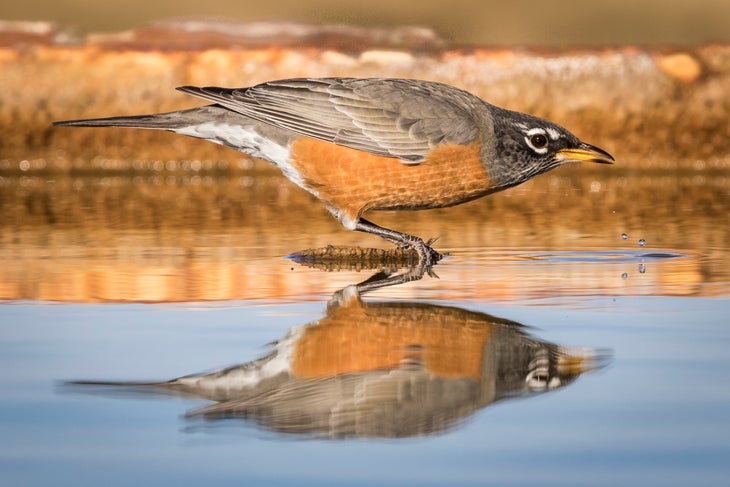
You’ve probably seen this iconic bird bouncing through your neighborhood or heard its song early on spring mornings. Identify a robin by its dark head, red feathers on the chest, and yellow bill.
House Finch
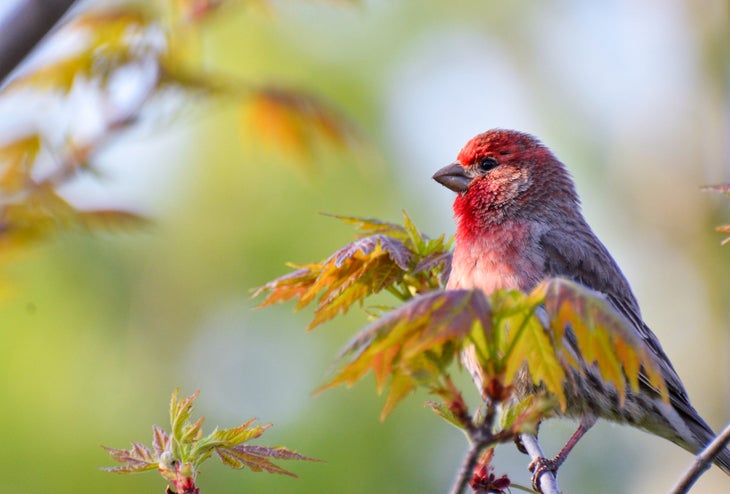
This colorful bird with its chipper song hails from the Southwest, but can be found across the country from cities to desert canyons. Recognize the house finch by its small body (about 5 inches long), large beak, and long notched tail. Adult males display red feathers around their faces and brown backs and tails. Females don’t have any red, but you can identify their streaky grey-brown feathers.
Red-Winged Blackbird
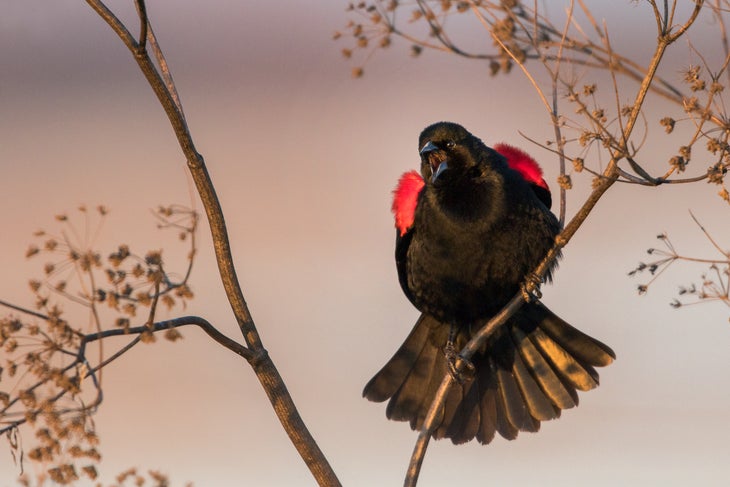
Recognize these noisy birds by the stunning red and yellow patches on the shoulder of males, and the brown streaks and white eyebrow of the females. Look for the robin-size birds along marshes or other bodies of water, including wet roadsides and fields.
Barn Swallow
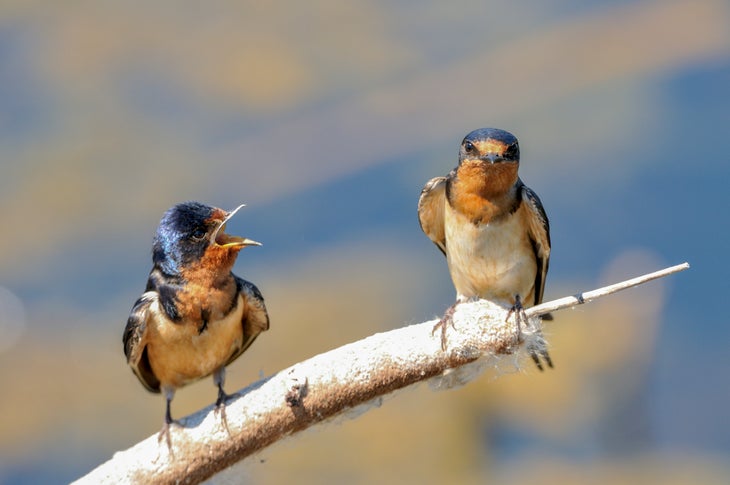
While it loves to fly over wide-open fields and parks, the twittering barn swallow often nests inside man-made structures. Look for its small body with pointed wings and a deeply forked tail, along with a tawny underside and blue wings, back, and tail.
Downy Woodpecker
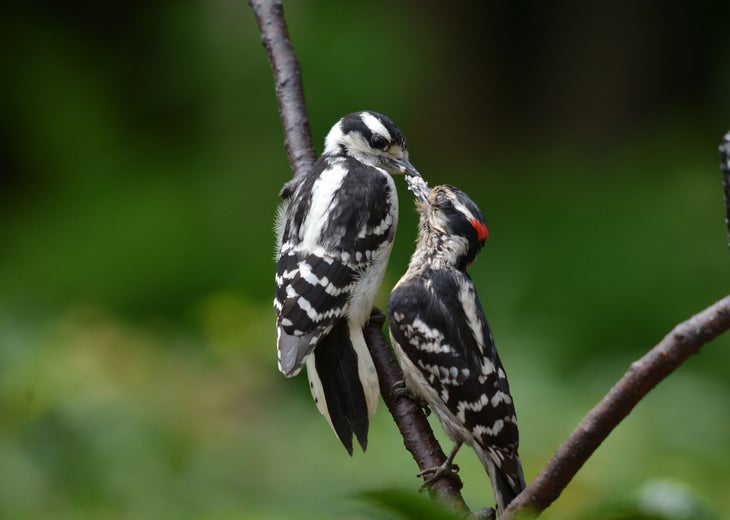
Spot and hear this distinctive forager wherever deciduous trees grow. Five to 7 inches in length, the downy woodpecker displays a small, straight bill and straight upright posture. Look for black and white wings and a striped head, with a bold white stripe down the back. Males have a red patch on the back of their heads.
White-breasted Nuthatch
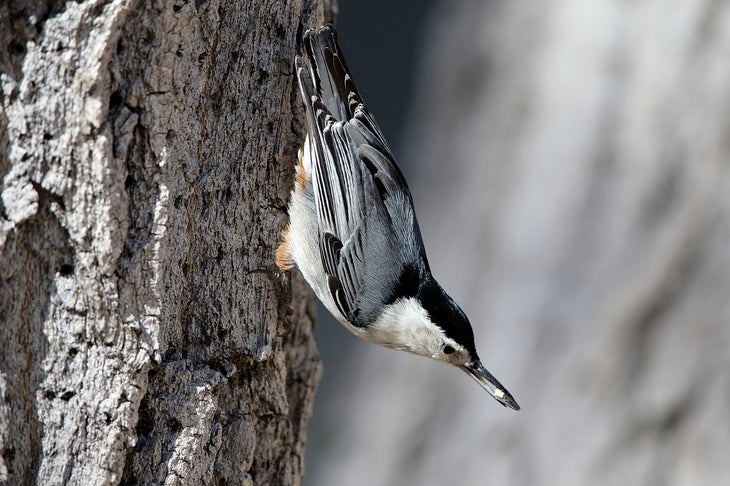
A lover of sunflower seeds, spy the nuthatch perched on your backyard birdfeeder and listen to its laugh-like call. This creature likes forest, or heavily-treed parks and towns. It’s small (about 5 inches long) with a long, pointed bill and short tail. As the name suggests, recognize it by its white breast, grey-blue back, and black “hood” framing the face.
